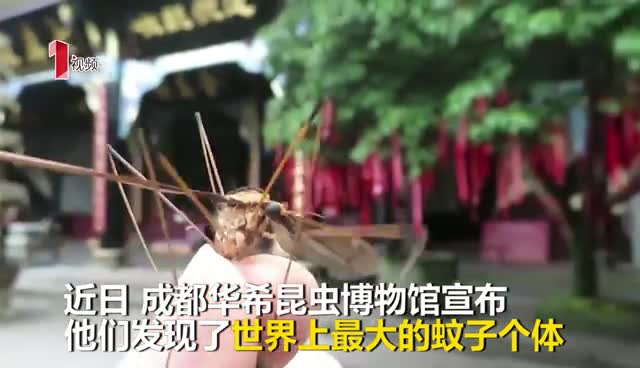
The weather is getting hotter and the mosquitoes are starting to return. Recently, the Insect Museum of West China in Chengdu announced that they had discovered the largest individual mosquito in the world - this mosquito has a wingspan of an astonishing 11 centimeters wide and a body length of nearly 5 centimeters! Put together with a bunch of beetles, dragonflies, and bees, this mosquito is like a "Big Mac." It is reported that the Huaxi Insect Museum will hold the "Shushan Strange Insect Series Exhibition - Summer Shushan" in May this year, and this largest mosquito will also make its debut.
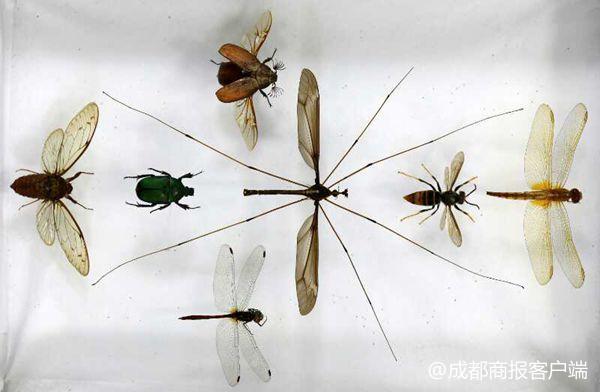
Giant mosquito
Or the world’s largest individual
From the gate of Qingcheng Mountain to Laojun Pavilion, Zhao Li can already walk the entire distance in one hour. In the past, it usually took him 2 hours. "I have been looking for this kind of mosquito since I discovered that there is a 'giant mosquito' in Qingcheng Mountain." Zhao Li, director of the Chengdu Huaxi Insect Museum, said that in August 2017, the museum collected a "giant mosquito" in Qingcheng Mountain. The individual wingspan reaches 11.15 cm. Since then, he has been looking for the mosquito's "heavyweight" in the population.
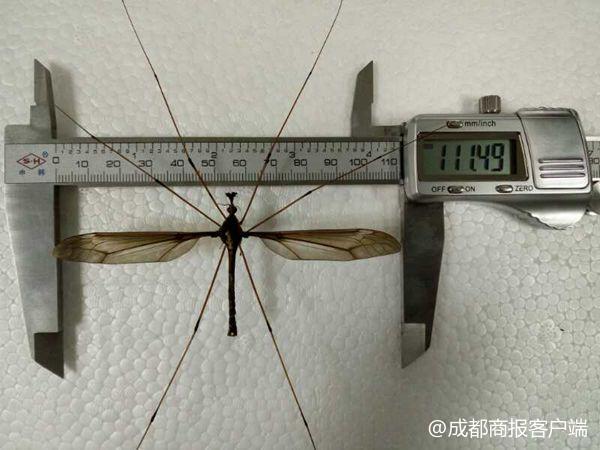
According to reports, this kind of mosquito is called "Holorusia mikado" (Holorusia mikado, also known as Mikado mosquito or emperor mosquito). It was first discovered in Japan and named by British entomologist John Obadiah Westwood in 1876. . According to the "Britannica International Encyclopedia" (Britannica International Encyclopedia), the "giant mosquito" is the largest species of Mosquitoidae in the world, with a wingspan of 8 centimeters, and the family Mosquitoidae is the largest group of mosquitoes.
The "giant mosquito" discovered this time exceeds the maximum wingspan record of this species that can be found by 10.2 centimeters (online records, unofficial published records). If nothing else happens, the individual discovered by the Insect Museum of Washi should be the largest mosquito individual in the known world. According to Zhao Li, the current online rumors about the world's largest mosquito are all incorrect. It is more common to mistake a mosquito model in a Japanese museum for a real specimen. The "gold-bellied giant mosquito" rumored on the Internet is actually much smaller than this.
Does not suck blood
The adult lifespan is only a few days
Zhao Li said that in insect taxonomy, mosquitoes refer to the insects of the order Diptera and the suborder Nematocera, including seven superfamilies: Mosquitoidea, Chironomidae, and Mosquitoidea. Among the tens of thousands of mosquito species in the world, only about a hundred species can "suck blood."
Due to the stereotype of mosquitoes, when many people see a mosquito as big as a "giant mosquito", they think it must suck a lot of blood. In fact, large mosquitoes never suck blood. Their adult lifespan is very short, usually only a few days. During these few days, they only eat nectar. Some species even eat nothing due to the degeneration of their mouthparts, and live on the nutrients stored in the larval stage.
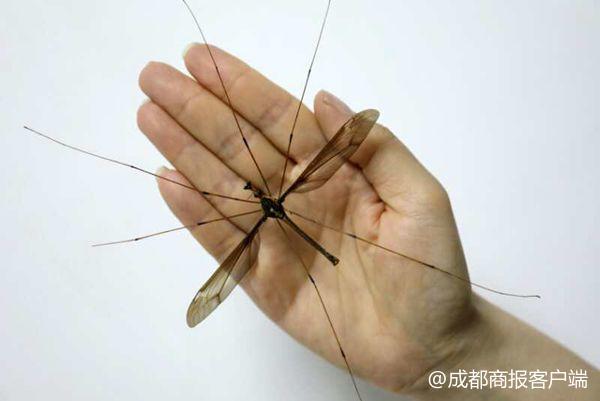
Their larvae don't necessarily live in water either. Most large mosquito species lay their eggs in the soil, and the larvae have a much harder shell than ordinary mosquitoes. They can live in soil, rotting wood, swamps, and even bird's nests. They feed on grass roots, rotting wood, fungal hyphae and moss. Some carnivorous species even feed on other mosquito larvae and can be called beneficial insects. They generally only appear in forests and other places with lush vegetation, staying peacefully in the grass and rarely moving.
Not good at flying
Often pretending to be dead to confuse the enemy
According to reports, there are more than 16,000 known species of Mosquitoidae in the world, and more than 800 species are known in China so far. In western Sichuan, "giant mosquitoes" are mainly distributed from the Chengdu Plain to mountainous areas with altitudes below 2,200 meters.
Giant mosquitoes become active at dusk and are phototactic at night. They can occasionally be found under outdoor lights in mountainous areas. Larvae live in shallow streams or streamside wetlands. The body is cylindrical or slightly flat, the head has a hard shell, and there are usually 6 fleshy protrusions at the end of the abdomen.
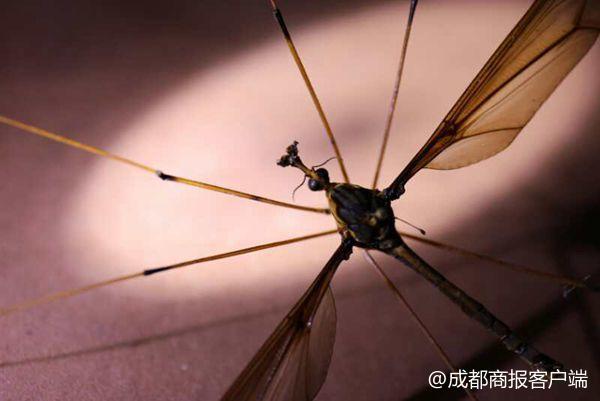
Due to their large size, they are not very capable of flying, especially the pot-bellied female mosquitoes, which usually jump on the ground as if flying. They usually live in areas with small bushes at the edge of woods. During the day, adults of large mosquitoes are often seen in the bushes using their front legs to grab the leaves, and the two pairs of legs behind them are stretched straight and hanging, and their swaying bodies look like they are swinging. It also often pretends to be dead to confuse its enemies. If you don't touch it, it will look like a withered insect corpse.
Like stick insects, these mosquitoes have very long legs and will break them off to survive if caught. When in danger, some species of female giant mosquitoes will eject their eggs far away to protect themselves, up to a distance of 20 centimeters.
It is understood that the Chengdu Huaxi Insect Museum is located at the foot of Qingcheng Mountain in Chengdu, Sichuan Province. It is the largest insect museum in Asia. It has nearly 700,000 insect specimens from all over the world, including more than 70 species of insects that are among the largest in the world.
Chengdu Commercial Daily client reporter Huan Xiaohuai
Picture provided by interviewee
Editor Liu Yanmei
Articles are uploaded by users and are for non-commercial browsing only. Posted by: Lomu, please indicate the source: https://www.daogebangong.com/en/articles/detail/qing-cheng-shan-fa-xian-wen-zi-zhong-de-zhan-dou-ji-bi-qing-ting-hai-da-que-bu-hui-xi-xie.html

 支付宝扫一扫
支付宝扫一扫 
评论列表(196条)
测试